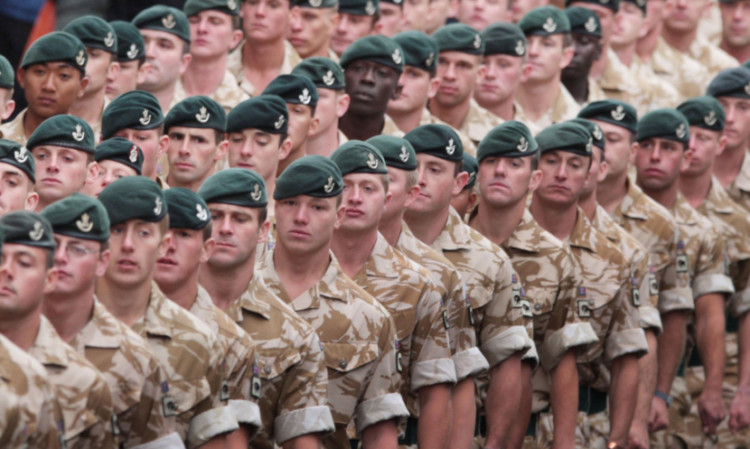The UK Government is launching a defence of the British military in a report criticising SNP plans for an independent Scottish force.
Defence Secretary Philip Hammond will promote the current set-up, with Scotland inside the UK, in a speech in Edinburgh.
He will no longer be joined by Liberal Democrat MP Michael Moore, who lost his job as Scottish Secretary in a UK Government reshuffle.
His replacement, the Orkney and Shetland MP Alistair Carmichael, will not attend, the party said.
The visit coincides with the publication of an analysis paper, prepared by UK civil servants, which aims to highlight the benefits to Scotland of the £34 billion UK defence budget.
Extracts of the UK Government report suggest it will focus on funding, jobs and the problems involved in splitting up an integrated military.
A claim that an independent Scotland would not be able to “co-opt” historic Scottish regiments has already been dismissed as “ludicrous” by SNP defence spokesman Angus Robertson MP, who called on Mr Hammond to apologise for defence “closures, cuts and broken promises” during his visit.
The Scottish Government proposes a £2.5 billion defence force, assuming a Yes vote in the referendum next September.
Further details of the plan are expected to be contained in the SNP administration’s formal “white paper” on independence in the coming week.
By 2020, UK ministers say there will be a joint force of 190,000 regular and reserves supported by 53,500 Ministry of Defence (MoD) personnel.
The report concludes that transition to an independent force would be complex.
“Adapting the functions of Scotland’s defence footprint would result in a substantial burden on the public finances of an independent Scottish state during establishment, and duplication of costs thereafter for the essential services currently provided on a UK-wide basis,” an extract of the report states.
“It is difficult to predict how long the establishment phase would last, but given the complex, integrated nature of the UK armed forces and the absence of command and control structures and other essential components in Scotland, this would not be an easy process.
“Even basic re-design of military bases is a costly undertaking requiring substantial investment to cater for different operational needs.”
The UK Government has suggested that “bonds of loyalty” may stop Scottish personnel from wanting to enlist in an independent defence force.
The report adds: “The question of how separate armed forces for an independent Scottish state would be manned would have acute significance.
“An independent Scottish state would face an immediate and pressing challenge to establish armed forces capability, and supporting defence machinery.
“In the event of a vote in favour of independence, negotiations over assets and liabilities such as equipment, basing and other infrastructure would be difficult; however on personnel, this would present an extremely difficult challenge to overcome, drawing in citizenship considerations.”
The 86-page report is being published just days after MPs on the Commons Defence Committee said it would be “remiss” of the Ministry of Defence (MoD) not to consider the implications of independence.
The MoD insists it is not making any preparation for a potential Yes vote next year.
While it says the British armed forces are deeply integrated, MoD chiefs also agree picking it apart would not be impossible.
Scottish Government veterans minister Keith Brown said: “With independence we can prioritise having the air and naval capability needed to monitor and secure our offshore territory and resources – our oil and gas resources, fisheries protection and safeguarding our coastal waters.
“Of course, we will properly protect our service personnel with a commitment to no compulsory redundancies in contrast to the job cuts being delivered by Westminster.”
A Scottish Government spokesman said: “We welcome this important acknowledgement from the UK Government that an independent Scotland stands to inherit a fair share of current UK defence assets.
“An independent Scotland will have first-class conventional forces which will play a full role in defending the country and co-operating with international partners – but we will not waste billions of pounds on Trident nuclear weapons.
“Scotland stands to inherit a fair share of existing UK defence assets, as the UK Government has now conceded, and an annual defence and security budget of £2.5 billion will represent an increase of more than £500 million on recent UK levels of defence spending in Scotland, but would be nearly £1 billion less than Scottish taxpayers currently contribute to UK defence spending.
“We have also been clear that we will retain all current defence bases, including Faslane, which will be Scotland’s main conventional naval facility, and our long-term commitment will ensure continued support for jobs and local economies in all the communities around Scotland that are home to military bases.”
